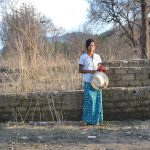In this report, Physicians for Human Rights (PHR) builds on its previous research on land confiscations in Myanmar by using an epidemiological survey tool to assess the human rights, livelihood, and health impacts on communities displaced by the reservoir created by Paunglaung dam in southern Shan state.
The purpose of this research was to determine if human rights were violated during the displacement process, and – if so – to measure the impacts of these violations on the displaced population. PHR developed an epidemiological survey tool consisting of several modules that can be used to assess if the eviction process followed the two major international legal frameworks relating to evictions and displacements – the Guiding Principles on Internally Displaced Persons (Guiding Principles) and the Basic Principles and Guidelines on Development-based Evictions and Displacement (Basic Principles and Guidelines) – and to measure the impacts of the displacement on livelihoods, food security, and access to health care and water.
PHR’s research found that the Guiding Principles and the Basic Principles and Guidelines were not followed in the planning and construction of the Paunglaung dam, and that the flawed displacement process led to the loss of jobs and income, as well as increased food insecurity, poverty, and limits on access to water. PHR also found high rates of depression and suicide among the displaced population.
These findings contribute to the growing body of evidence that land confiscations for economic development projects are having devastating impacts on the livelihoods and health of the people of Myanmar, including violations of the right to work, water, food, and life. Economic development projects are destroying the economies of people who live near them.

